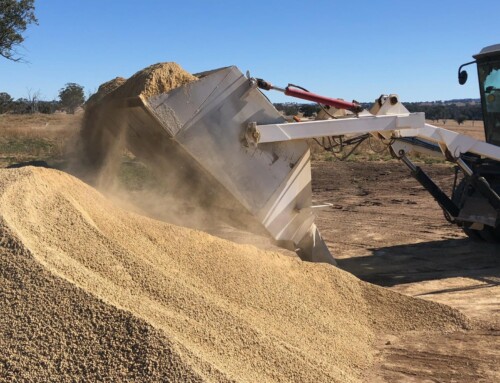RPR-GYP is a blend of both Pacific Fertiliser’s RPR2 Phosphate Rock and sub 2mm Mined Gypsum products, that provide an organic alternative to ordinary “super”.
Unlike conventional acidified fertilisers, RPR-GYP provides a slow release source of plant-available phosphate, as well as calcium and sulphur needed for plant growth and healthy
soils.
All the products used in RPR-GYP are mined in Australia and are of the highest quality, ensuring you get a superior result, whilst supporting a local business.
General Specifications 80/20:
• Total P – 7.2%
• Calcium – 22.3%
• Sulphur – 4.5%
We can do any blend ratio and also add in elemental sulphur to increase the dissolution of the RPR and the sulphur content.
DPI NSW Research in 2006
In conventional broad acre agriculture, plant available soil phosphorous (P) is usually maintained with P fertiliser like superphosphate. In similar organic agricultural systems such fertilisers are unacceptable inputs so P is often deficient for crop and pasture production on organic farms. A survey of organic farms in south-eastern Australia in 2005 reported available soil phosphate (Olsen P) levels that were frequently less than 6mgP/kg which indicated deficiencies. Improved P management, including developing a fertiliser that would suit organic farming regulations, is required to sustain and increase production on these farms. Reactive rock phosphate (RPR) and elemental sulphur (S) are natural products, suitable for organic use.
Field and pot experiments were done to measure the impact of ground RPR and co-treatment of RPR with finely ground S, on available soil phosphate, plant dry matter and P concentration. Under dryland farming conditions in this region of southern Australia (<600 mm rainfall, soil organic carbon <3%), co-treatment of RPR with S was necessary to increase Olsen P. The higher values of Olsen P were generally associated with increased plant dry matter, together with higher P concentration in the dry matter. The amount of S required was less the more acidic the soil, but greater than that reported as being effective in higher rainfall situations (>1000 mm) and higher soil organic carbon (11%).
It was deduced that the S is probably required to overcome the constraint on the dissolution of RPR resulting from frequent periods of low soil moisture. It was concluded that for the south-eastern cropping zone, co-treatment of ground-reactive rock phosphate with finely ground elemental S at rations (RPR:S) of at least 2:1, depending on soil pH, is required for effective use of RPR even in strongly acidic soils. It was recommended that organic farmers may recover soil P fertility by applying RPR+ fertiliser to their most acidic paddocks, postponing soil liming and managing the paddocks to conserve soil moisture.
http://www.dpi.nsw.gov.au/research/areas/productivity/farming-systems/scientific-outputs/2006/1018










